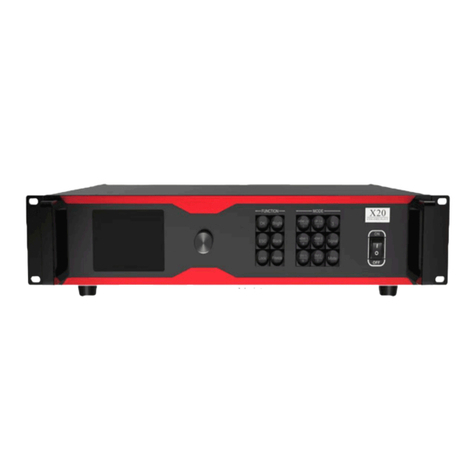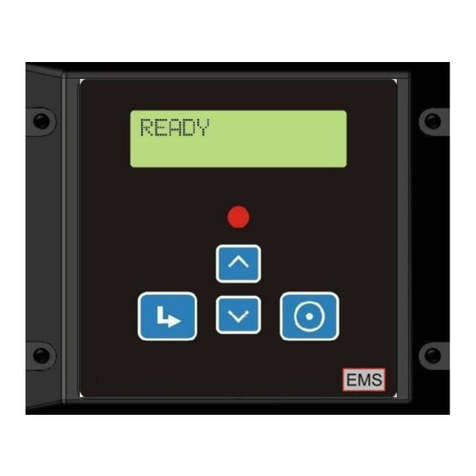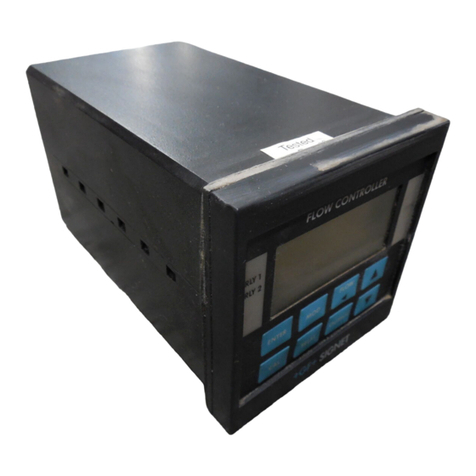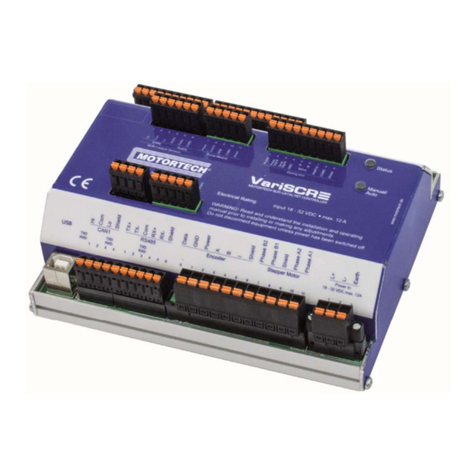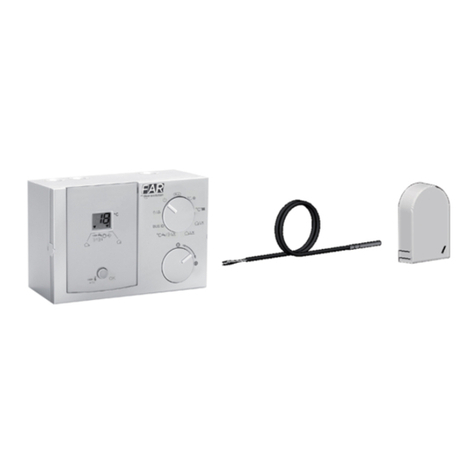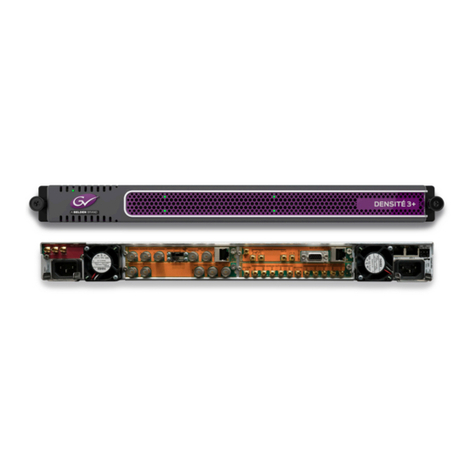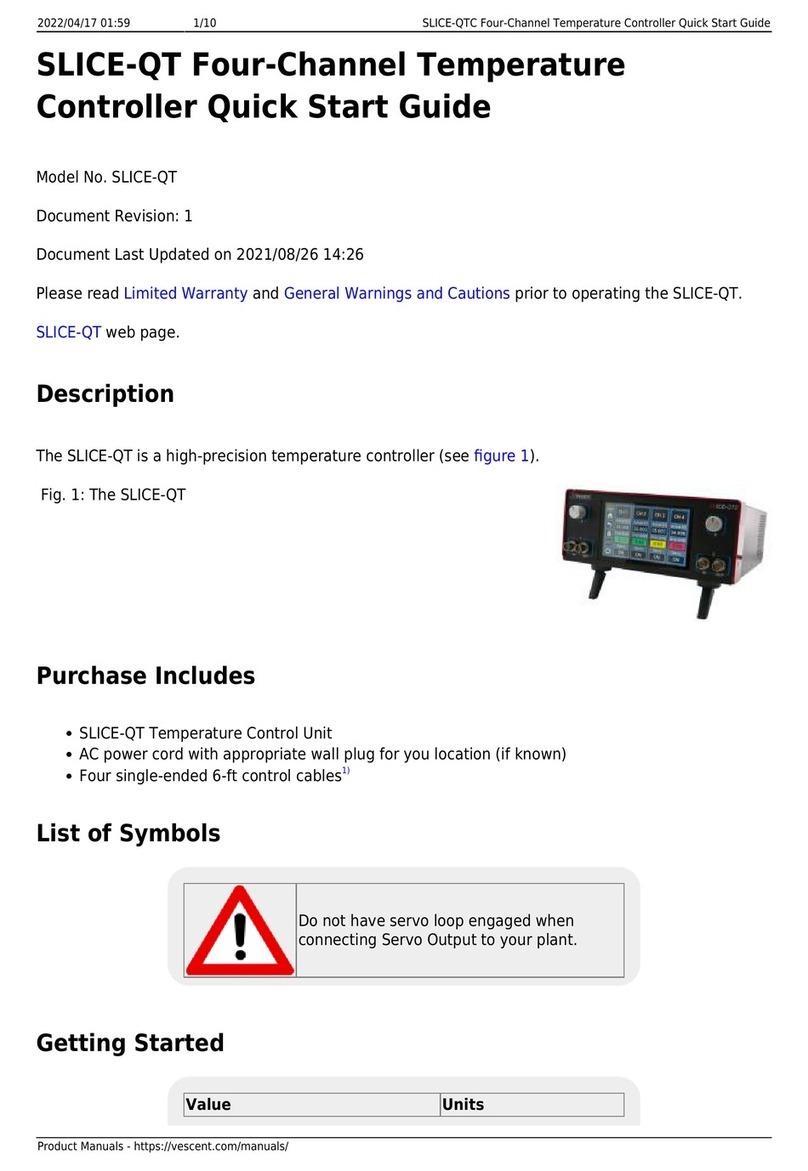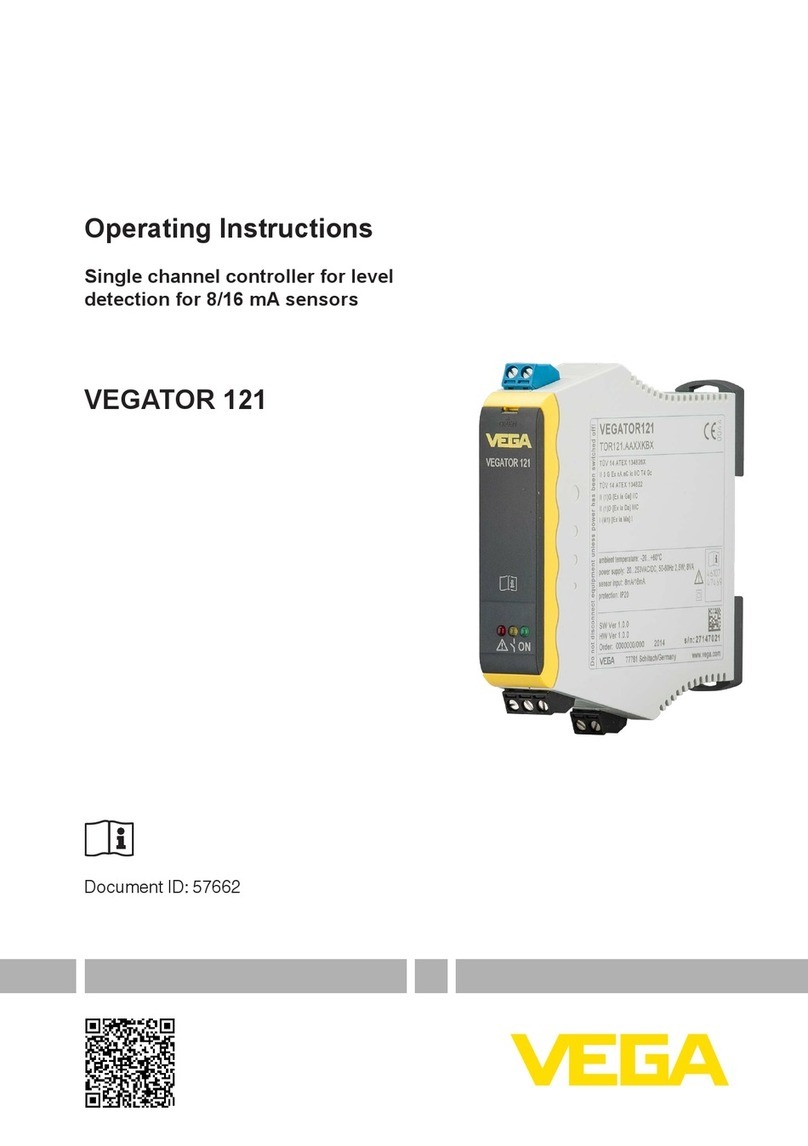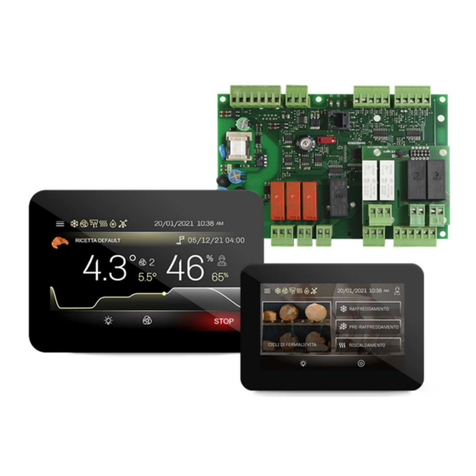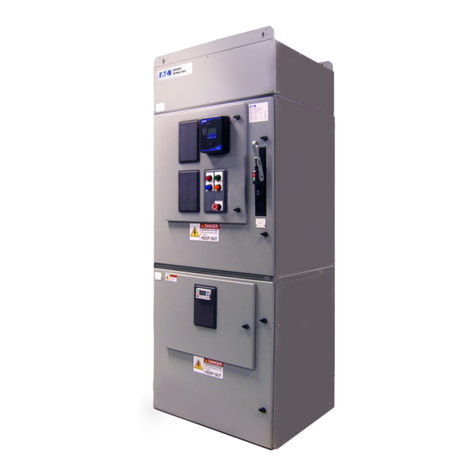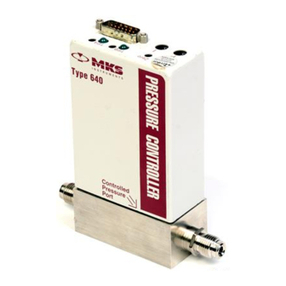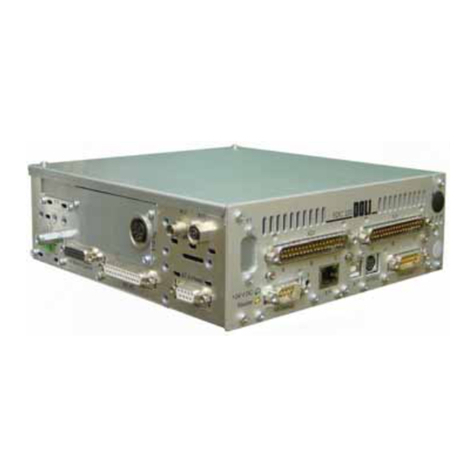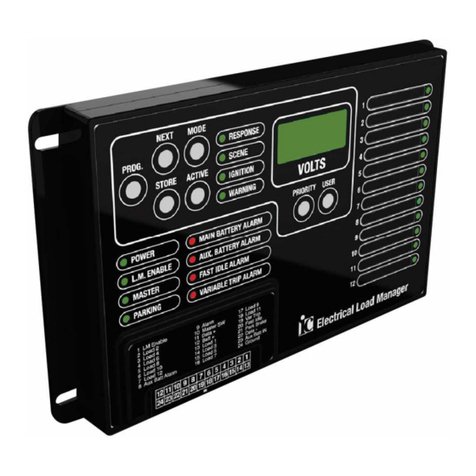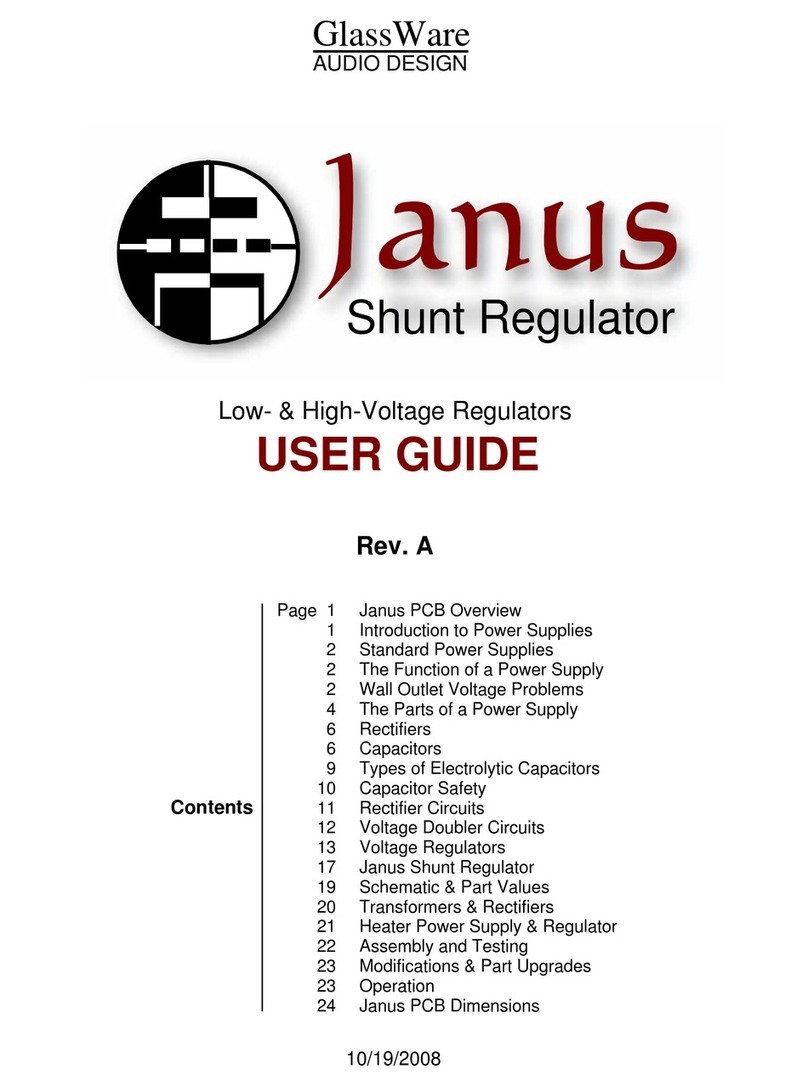avantor VWR VC100 User manual

Version01 Issue 3/ 10/2023
1
Instruction Manual
VWR®CONTROLLER VACUUM VC100

Version01 Issue 3/ 10/2023
2
Legal address of Manufacturer
United States
VWR International LLC
100 Matsonford Rd
Radnor, PA 19087
+1 800-932-5000
www.vwr.com
Country of Origin
China

3
Table of Contents
1. SAFETY PRECAUTIONS...............................................................................................4
2. PRODUCT OVERVIEW .................................................................................................5
2.1 SCOPE OF APPLICATION............................................................................................................ 5
2.2 TECHNICAL PARAMETERS .........................................................................................................5
2.3 COMPONENTS ....................................................................................................................... 6
3. OPERATING INSTRUCTIONS..................................................................................... 7
3.1 OPEN-PACKAGE INSPECTION .................................................................................................... 7
3.2 OPERATION............................................................................................................................8
4. MAINTENANCE............................................................................................................ 15
5. FAILURE DIAGNOSIS .................................................................................................16
6. WARRANTY POLICY ..................................................................................................17

4
1. Safety Precautions
Caution!
•Please carefully read the manual before operating the product, and
observe the specifications on safe operation.
•Ensure that only trained staff operates this product.
Ground protection for safety!
•Ensure that the power socket has been properly grounded before
operating the product
•Ensure that the label indicated the correct voltage before connecting the device to
power supply.
•Ensure good working environment free of explosive, hazardous and inflammable
substances. This product is intended for indoor use only.
•The instrument should be placed in a low humidity, well ventilated, less dust, water
free environment without the perpendicular incidence of sunshine and intense light
source. The environment should be free of corrosive gases or strong magnetic
interference, and far away from heating gas, fire and all other heat sources.
•Ensure that the instrument and its accessories are free of any potential defects.
•Ensure that the instrument is secured tightly and standard accessories supplied by
the manufacturers only should be used.
•Wear proper protective equipment while operating this instrument to prevent the
potential dangerous circumstances with the risk of splashing/ release of toxic or
inflammable gases.
•The power cable must be kept away from the surface of heating module rather than
shield the device.
•Please prevent water from splashing on the electrical elements of the product.
•The power supply is fully disconnected only if the power plug is pulled out.
•Before assembly, disassembly, cleaning or maintenance, the main power plug must
be pulled out.
•Ensure the vacuum pump’s power is not more than the maximum power output
by the instrument.

5
2. Product overview
2.1 Scope of application
•The instrument is designed for the application environments with
dedicated independent power supply, such as schools, laboratories and factories.
It is applied to control the vacuum level of the vacuum system with gas as the
medium in the environments, under the circumstance as below.
•Ensure that the voltage fluctuation does not exceed normal value by ±10%.
•Ensure to place the instrument at 30cm away from the wall and at least 10cms
away from any other instruments.
•The product is not intended for use in residential areas.
>300mm
>100mm
Fig. 2.1
2.2 Technical parameters
Setting range of vacuum
1- 1000mbar
Determination range of
vacuum degree
1- 1000mbar
Control operation mode
Single-point control operation mode, program
operation mode
Control program
Can save up to 5 programs.
Each program contains five-step control (vacuum
degree and timing can be set).
Setting mode
Touch screen setting
Display screen
5-inch TFT
Sensor overload pressure
1500mbar
Connecting t u b e interface
diameter
6.2mm

6
Materials in co n t ac t wi t h
steam
PTFE, PP, silica gel and ceramics
Steam temperature
5℃-40℃
External
WxDxH
dimension
189mm×207mm×193mm
Weight
4.0kg
Input power supply
AC110—240V, 50Hz/60Hz
Working temperature
10℃-40℃ , ≤80%RH ,the altitude does not exceed
2000 meters
Pollution levels
2
Input power
600W
Maximum output power
500W (220V), 300W(110V)
2.3 Components
Three-in-one switch
Touch screen
Air vent
Power
socket
Fig. 2.3.1
Fig. 2.3.2
Name
Description
Touch screen
Setting parameters and displaying settings and
operation information
Three-in-one
Unit power input, with a switch controlling the
Pump interface
Communication
Load interface
interface
output

7
switch
power supply to the entire unit.
Communication
interface
Communication
Pump interface
Connects the vacuum pump
Air vent
Connects with air or inertia gas if necessary.
Load interface
Connects the load, such as revolving evaporator.
Power output
socket
Provides power supply to vacuum pump.
Table 2
3. Operating instructions
3.1 Open-package inspection
Open-package inspection aims to confirm the completeness of associated parts. The
packing list is given below.
Name
Qty.
Main unit
1
Power line
1
Operating Instructions
1
Table 3
If you find any damage on the packing, please specify the damage after receipt. If you
find any internal damage after unpacking, please contact your local supplier or
manufacturer.
Note:
If you find any visible damage on the product, please don’t connect the
product to power supply.

8
3.2 Operation
3.2.1 Instrument preparation
•The instrument should be place on a stable surface and well ventilated without any
flammables or explosives.
•Ensure that the label indicated the correct voltage before connecting the device to
power supply.
•Ensure that the power socket is grounded properly.
•Connects the lines of the instrument, vacuum pump and load properly.
•Connects the power cable of the vacuum pump to the instrument and turn ON the
vacuum pump switch.
•Connect the power cable of the instrument properly, and turn ON the Power switch.
3.2.2. Startup interface description
Fig. 3.2.1
Button name
Function introduction
VENT
Gently touch VENT to vent air and lift it to stop
venting.
PROGRAM
Choose the control mode and set the control pressure
value and running time.
SETTINGS
Set the delay time to open and close the pump
and valve, set the local atmospheric pressure, adjust
the
pressure sensor calibration parameters.
START
Gently touch it to start the control program, with the

9
icon changed to
the control program.
, gently touch it again to stop
Table 4
Note:
‘PROGRAM’ and ‘SETTINGS’ buttons cannot be operated if the control
program starts.

10
3.2.3. Instrument configuration
Gently touch the "SETTINGS" button to pop up the password soft
keyboard, enter the password (the default initial password is 6666), then
press “enter” key, confirm the password is correct and then pop up the
setting interface, as shown in the figure below.
Fig. 3.2.2
Name
Function introduction
Pump Delay(ms)
The delay time after opening or closing the vacuum
pump.
Valve Delay(ms)
The delay time after opening or closing the solenoid
valve (inside the instrument).
K B
Pressure sensor calibration parameters
P0(mbar)
Local atmospheric pressure value
Reset
Restore the factory settings
Table 5
After setting, click “OK” key to return to the startup interface.
Note:
Before clicking the “ Reset” button, record the pressure sensor calibration
parameters (K and B). After restoring the default setting, write (K and
B) into the instrument, otherwise the pressure measurement accuracy will
be adversely affected.
,

11
3.2.4. Operation mode selection and configuration
1.Click the “Program” button to pop up the program selection interface as shown in the
following figure.
Fig. 3.2.3
Click “Vacuum control” in the “ Function” section to choose the
single- point control operation mode, click “Program” to select the
program operation mode.
2. Single-point control operation mode
Click “Vacuum control” in the “Function” section to refresh the current
page as shown in the following figure.
Fig. 3.2.4

12
Name
Function Introduction
Set vacuum(mbar)
Set the vacuum value within a range of 1 - local atmospheric
pressure (P0)
Hysteresis(mbar)
Hysteresis value affects the pressure fluctuation range and
the ON/OFF frequency of vacuum pump.
Setting range 1-300mbar
Time(min)
Time can be set within a range of 0-5999min
Table 6
After setting the parameters, click “OK” key to return to the startup interface.
Note:
The larger the hysteresis value set, the larger the pressure fluctuation,
the smaller the hysteresis value set, the smaller the pressure fluctuation
and the more frequently the vacuum pump starts up and shuts down.
The recommended hysteresis value is set at 10mbar.
Note:
The sum of the set vacuum value and hysteresis value cannot exceed
(P0- 10) mbar and the set vacuum value is larger than the hysteresis value.
3. Program operation mode
Click “Vacuum control” button in the “Function” section to pop up the
program selection interface as shown in the following figure.
Fig. 3.2.5

13
(1) Program selection
Name
Function introduction
Open
Select the program number
Hysteresis(mbar)
Hysteresis value affects the pressure fluctuation
range and the ON frequency of vacuum pump
Setting range 1-300mbar
Table 7
After setting the parameters, click “OK” key to enter the program
operation interface as shown in the following figure.
Fig. 3.2.6

14
(2) Program editing
Click the “Edit” button in the “program selection interface” to pop up the
program editing interface as shown in the following figure.
Program editing area
Fig. 3.2.7
Name
Function introduction
NO
Sequence No. of program execution
Time(min)
Timing time, set within a range of 0-5999min
Vac(mbar)
Set the vacuum value within a range of 1 - local
atmospheric pressure (P0)
Table 8
After setting the parameters, press the program number to be saved until
the upper part of the interface indicates “save” . As shown in the figure.
Indicates “ save”
Fig. 3.2.8
Note:
If the set vacuum value or timing is blank, it indicates that the current step
Program No.
selection button

15
will be skipped to the next control program.
3.2.5. Ventilation
Gently touch the “VENT” button to vent air and lift it to stop venting.
4. Maintenance
Proper maintenance and operation of the instrument in good working state can extend
its service life.
Keep the instrument dry and clean in routine operations. Clean the outer surface with a
non-grinding cleanser and connect to power supply only if the entire surface is dry.
If liquid or moist solid enters the product, please disconnect the power supply and
contact the manufacturer/ local supplier for more advice.
•Stains on the surface of device, if any, shall be cleaned by clean soft rag and
detergent.
•Keep the product clean, and the cleaning solution is not allowed to flow into the
machine.
•Power must be disconnected before maintenance and cleaning, and please use our
recommended methods to clean the product.
•Avoid cleaning the instrument with corrosive cleaning solution.
•If this instrument is left unused for a long period, switch power OFF and store it in
a dry, clean and smooth surface at normal temperature.
Caution!
Before any maintenance or inspection, the power cable must be pulled
out of the socket.

16
5. Failure diagnosis
The advanced production technology and testing methods are used for rigorous testing
before delivery, to ensure good reliability. In service, the common failures are generally
caused by improper operation or setting.
If the errors cannot be handled properly, please record the error phenomenon and notify
the local dealer, or contact us directly.
The following are the possible failures of the vacuum controller in application:
Fault phenomenon
Cause analysis
Solution
The vacuum pump does
not work
The power switch on the
vacuum pump is not turned
ON.
The power cable connection is
improper or damaged.
Switch power ON the
vacuum pump.
Connect the cable
properly or replace the
damaged cable.
Error message appears
when setting the
pressure value
Check whether the set value
exceeds the limit.
Adjust the set value.
The solenoid valve and
pump is ON/OFF
frequently.
Check the pipeline for
airtightness.
Check whether the hysteresis
value is too small.
Connect the pipeline
properly.
Increase the hysteresis
value.

17
Technical service
Web Resources
Visit the VWR website at vwr.com for:
• Complete technical service contact information
• Access to the VWR Online Catalogue, and information about accessories
and related products • Additional product information and special offers
Contact us for information or technical assistance contact your local VWR
representative or visit www.vwr.com.
Warranty
VWR warrants that this product will be free from defects in material and workmanship
for a period of two (2) years from date of deli very. If a defect is present, VWR will, at
its option and cost, repair, replace, or refund the purchase price of this product to the
customer, provided it is returned during the warranty period. This warranty does not
apply if the product has been damaged by accident, abuse, misuse, or misapplication,
or from ordinary wear and tear. If the required maintenance and inspection services
are not performed according to the manuals and any local regulations, such warranty
turns invalid, except to the extent, the defect of the product is not due to such non-
performance.
Items being returned must be insured by the customer against possible damage or loss. This
warranty shall be limited to the aforementioned remedies.IT IS EXPRESSLY AGREED THAT
THIS WARRANTY WILL BE IN LIEU OF ALL WARRANTIES OF FITNESS AND IN
LIEU OF THE WARRANTY OF MERCHANTABILITY.
Compliance with local laws and regulations
CONDITIONS OR APPLICATIONS. Compliance with Local Laws and Regulations The
customer is responsible for applying for and obtaining the necessary regulatory approvals
or other authorizations necessary to run or use the Device in its local environment. VWR
will not be held liable for any related omission or for not obtaining the required approval
or authorization, unless any refusal is due to a defect of the Device.

18
Equipment disposal
This equipment is marked with the crossed out wheeled bin symbol to indicate that this
equipment must not be disposed of with unsorted waste.
Instead it's your responsibility to correctly dispose of your equipment at life cycle -end by
handling it over to an authorized facility for separate collection and recycling. It's also your
responsibility to decontaminate the equipment in case of biological, chemical and/or radio logical
contamination, so as to protect from health hazards the persons involved in the disposal and
recycling of the equipment.
For more information about where you can drop off your waste of equipment, please contact your
local dealer from whom you originally purchased this equipment.
By doing so, you will help to conserve natural and environmental resources and you will ensure
that your equipment is recycled in a manner that protects human health.
Thank you

19
Our offices in North America
United States
VWR International, LLC
100 Matsonford Road
Building One Suite 200
Radnor, PA 19087
Tel.: +1 800 932 5000
Email: vwrcustomerservice@vwr.com
Canada
VWR International
2360 Argentia Road
Mississauga, Ontario L5N 5Z7
Tel.: +1 800 932 5000
Email: canadainfo@avantorsciences.com
Mexico
VWR International S. de R.L. de C.V
Carretera Tlalnepantla-Cuautitlán Km 14.5
Colonia Lechería, Tultitlan, Edo. México, CP 54940
Tel.: +800 759 8974
Email: mdl_mx_csr@AvantorSciences.com
Puerto Rico
VWR Advanced Instruments LLC
Bo. Coto Norte,
Carr. 686, Int. 670
Manatí, PR 00674
Tel: +1 787 621 3600
Email: Custom[email protected]om
This manual suits for next models
1
Table of contents
